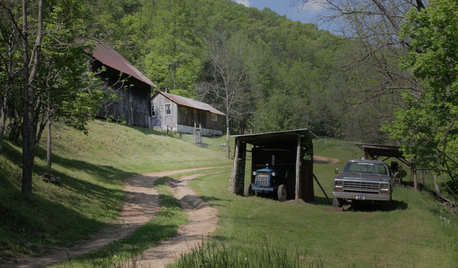Engine life
bus_driver
10 years ago
Related Stories

HOUZZ TOURSMy Houzz: Reinventing a 1930 Fire Station for Family Life
Don't sound the alarm because the fire engine is gone; this remodeled station now happily hosts fundraisers and two generations of a family
Full Story
REMODELING GUIDESWhen to Use Engineered Wood Floors
See why an engineered wood floor could be your best choice (and no one will know but you)
Full Story
KITCHEN DESIGNKitchen Counters: Stunning, Easy-Care Engineered Quartz
There's a lot to like about this durable blend of quartz and resin for kitchen countertops, and the downsides are minimal
Full Story
HOLIDAYSGet an Eyeful of a Life-Size Gingerbread House
With 2 tons of candy, gingerbread and icing, this holiday confection will make your mouth water and your heart sing
Full Story
HOUZZ TOURSMy Houzz: New Life for a Dilapidated Cape Cod
Neutral colors, classic furnishings and coastal touches outfit a floral designer and her husband’s Massachusetts home
Full Story
TASTEMAKERSNew Series to Give a Glimpse of Life ‘Unplugged’
See what happens when city dwellers relocate to off-the-grid homes in a new show premiering July 29. Tell us: Could you pack up urban life?
Full Story
SMALL HOMESCan You Live a Full Life in 220 Square Feet?
Adjusting mind-sets along with furniture may be the key to happiness for tiny-home dwellers
Full Story
GARDENING AND LANDSCAPINGExpert Talk: Porch Swings Sway Into Sweet Life
Their lilting rhythms and tastes of the good life beckon. See how professional designers heeded the porch-swing call
Full Story
HOUZZ TV FAVORITESMy Houzz: New Life and Style for a 1976 Airstream
The owner of this 1976 Ambassador Airstream embraces flexible furniture and clean, organized spaces
Full Story


bluemower
krnuttle
Related Professionals
Franconia Landscape Architects & Landscape Designers · Horsham Landscape Architects & Landscape Designers · Piqua Landscape Architects & Landscape Designers · Richmond Heights Landscape Architects & Landscape Designers · Seabrook Landscape Architects & Landscape Designers · McKinney Landscape Contractors · Beverly Hills Landscape Contractors · Clearlake Landscape Contractors · Milford Landscape Contractors · Pleasanton Landscape Contractors · San Antonio Landscape Contractors · San Pablo Landscape Contractors · Richmond Window Contractors · Hilton Head Island Window Contractors · Springfield Window Contractorsmownie
krnuttle
1111gd1111 3b NW WI
ed1315
mownie
bus_driverOriginal Author
corn_squeezer